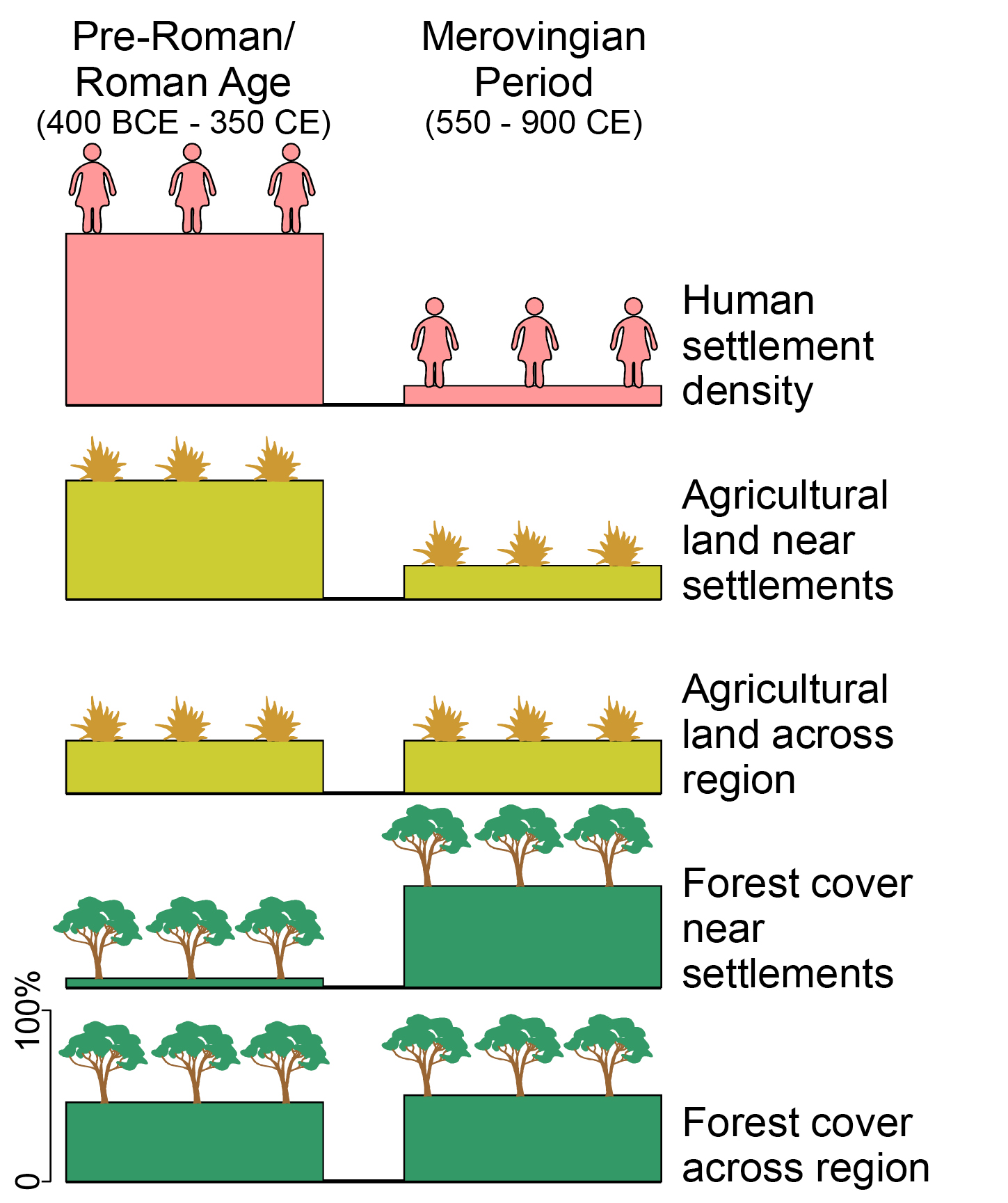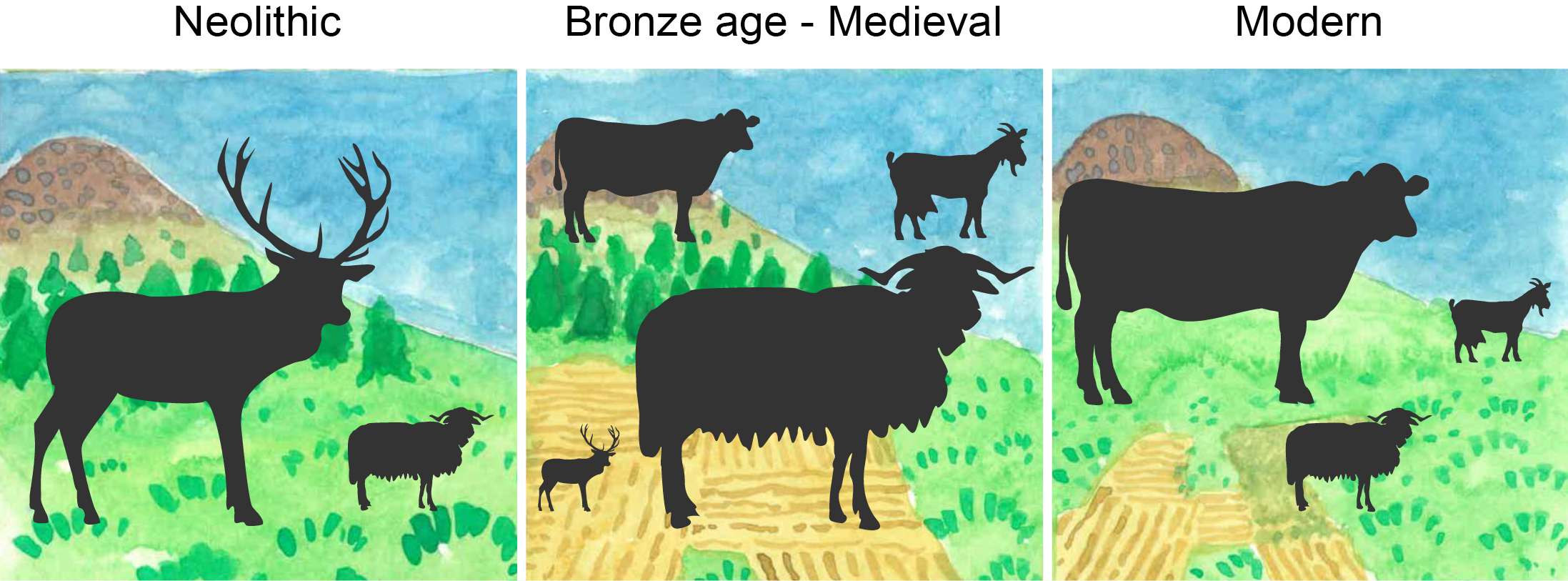- Home
- Publications
- PAGES Magazine
- Situating Past Societies In Their Environments: Emerging Techniques
Situating past societies in their environments: Emerging techniques
Simon E. Connor
Past Global Changes Magazine
31(1)
10-11
2023
Past societies have much to teach us about ways of dealing with environmental change. New techniques in landscape reconstruction and ancient DNA are shining a light into the past and revealing how people and environments shaped each other.
Real understanding of past societies can only come with a holistic view of their place in the world. Today’s societies rely so heavily on technology and human-modified environments that we sometimes imagine we act separately from the ecosystems that support us. We need only to look at the economic and health impacts of recent extreme weather, fires, and floods to see how wrong this view can be. The environment shapes how we understand ourselves as humans. In fact, it is humanity’s lived experience of past environments that has led to today’s environmental knowledge.
Why situate past societies in their environments?
The link between past experience and present knowledge is what makes the study of past societies and environments so important. Although each day brings new situations, we can all benefit from the experience handed down to us, regardless of whether it was from yesterday or thousands of years ago. Today’s technology-saturated societies might imagine that the further we go back into the past, the more direct the relationship between people and their environment. But delving into that relationship is not a straightforward task and becomes more difficult the deeper in time we go. The scientific evidence is often indirect, fragmented and murky.
Archaeologists study this fragmented evidence to understand past societies, and paleoecologists delve into mud to understand past ecosystems. By talking to each other, we can work towards a shared understanding. Bringing these two fields together presents a number of challenges, however. Reconciling issues of different spatial scale, different timescales and different scholarly mindsets can frustrate attempts to investigate past socio–environmental systems.
Insights from land-cover modeling
New techniques promise to relieve some of these frustrations. One particularly promising field is land-cover modeling, which turns pollen sequences into realistic estimates of vegetation cover and composition. Land-cover modeling can reveal the extent of past modification of ecosystems by humans, rewriting the history of human activity on the Earth’s surface. This can be achieved on various scales, from continental to local, depending on the human–environment interactions of interest. Researchers interested in the major turning points in human history, such as migrations and the emergence of agriculture, might require information about past vegetation on a continental scale. An example of this is a land-cover reconstruction from Europe, which tracks the shifting distribution of Holocene forests, and the rapid expansion of agricultural land across the continent (Githumbi et al. 2022). Reconstructions on this scale provide data that can be compared to archaeological evidence and climatic shifts reconstructed from various paleo-proxy data.
On a regional scale, land-cover modeling can show how ancient cultural practices, like deliberate burning, modified the vegetation. In Australia, for instance, there are few suitable trees for fire-scar studies, meaning there is little information about past fire regimes. Using land-cover modeling, researchers were able to reconstruct past vegetation, showing that Indigenous people created forest environments that were grassier than they are today (Mariani et al. 2022). This information can be useful in managing Australia’s wildfire problem. In Czechia, land-cover modeling showed how generations of scientists have made the mistake of thinking spruce forests are recent introductions, rather than the ancient forest ecosystems new evidence shows them to be (Abraham et al. 2016). How we manage these forests depends very much on what we know about their history.
At the local scale, researchers can use land-cover modeling to distinguish between local human activities around archaeological sites, and environmental change occurring across the broader region. In Norway, researchers found that trees covered only 5–10% of the landscape near settlements during periods when the area was densely populated, compared to around 50% tree cover across the landscape as a whole (Hjelle et al. 2022). Tree cover expanded after settlements were abandoned (Fig. 1). This level of detail allows us to begin to imagine how our ancestors interacted with their surroundings, adopting different attitudes and practices in near and distant zones.
Ancient DNA
Ancient DNA is another approach with enormous potential for situating past societies in their environment. Despite its ability to uncover past biological diversity in unprecedented detail, ancient sedimentary DNA (sedaDNA) is subject to biases (e.g. preservation) that can make its interpretation difficult (Edwards 2020). For this reason, it is preferable to use sedaDNA alongside other proxies, including traditional indicators like pollen, but, also emerging proxies like lipid biomarkers, as unequivocal human traces.
An example is a study of a medieval archaeological site in Ireland, where researchers were able to use sedaDNA, novel biomarkers, and other proxies in lake sediments to investigate how people used plants and animals in the past (Brown et al. 2021). Unexpected details of animal husbandry and butchering were revealed from multiple lines of evidence, as well as clear signs of deforestation and the cultivation of plants that are rarely, or imprecisely, identified from fossil pollen. Importantly, their approach had no impact on the archaeological site itself, and, unlike an excavation, it tells us what happened at the site prior to site formation and after site abandonment. In this way, we can begin to understand why people established a settlement, and why they eventually left.
Another example of the use of sedaDNA comes from the Swiss Alps, where researchers discovered that pastoral activity had been a key driver of alpine plant diversity for thousands of years (Garcés-Pastor et al. 2022). Unlike some pollen grains that can spread long distances in the air, sedaDNA most likely comes from the catchment area, and it provides additional information on animal occupation. This makes sedaDNA a very useful indicator of local change in vegetation. The researchers found evidence for changing pastoral practices against a background of vegetation change. People shifted from a reliance on wild fauna to domesticated sheep, goats and cattle through a succession of archaeological periods (Fig. 2). This kind of research shows how different societies in the past were able to balance agriculture, pastoralism, forest resources, and habitat diversity to create unique subsistence patterns in space and time, allowing them to adapt to a dynamic environment.
Suitable archaeological contexts can also yield ancient DNA. In an example from Greenland, researchers used DNA analysis of small bone fragments to find out what Inuit and Norse populations were eating (Seersholm et al. 2022). This research revealed a rich diversity of prey, including many species from the land and sea that are rarely, if ever, preserved or found in archaeological sites. This gives researchers new tools for understanding how people interacted with other species, hinting at the human intelligence that must have been needed to understand, capture and prepare so many different species from their environment.
The examples above come from relatively cool, wet environments, but sedaDNA also has potential in semiarid environments with much longer histories of human occupation, such as the African savanna (Tabares et al. 2020). Along with other new proxies, ancient DNA seems to set the stage for a renewal in how we conceptualize the past.
Better research
Like any new tool, there are important limitations and ethical issues that come into play, especially when dealing with the cultural and genetic heritage of Indigenous peoples. Scientists can often be blind to the deep and intangible cultural associations that belong to certain places and things. There are various frameworks that can guide a more considerate approach to research (de Freitas et al. 2022). It could involve taking a different perspective – seeing landscapes and sites as biocultural heritage (Ekblom et al. 2019) and acknowledging that all environments, despite their apparent "wilderness", are places humans have modified to varying degrees (Fletcher et al. 2021). Or it could involve taking a truly collaborative and ethical approach – one that requires researchers to adopt research practices developed with, and by, Indigenous communities, or to co-design research directly with the communities themselves (AIATSIS 2020; Copes-Gerbitz et al. 2022; de Freitas et al. 2022).
As researchers, we need to remain mindful of the people who created and maintained complex socio–environmental systems over millennia. While new technology and techniques hold much promise, a truly holistic view requires us to consider multiple sources of evidence, and to learn from the descendants of the societies and environments we are trying to study.
affiliation
School of Culture, History and Language, Australian National University, Canberra, Australia
contact
Simon Connor: simon.connor anu.edu.au
anu.edu.au
references
Abraham V et al. (2016) Preslia 88: 409-434
Brown A et al. (2021) Sci Rep 11: 11807
Copes-Gerbitz K et al. (2022) PAGES Mag 30(1): 48-49
de Freitas KM et al. (2022) PAGES Mag 30(1): 50-51
Edwards ME (2020) Quat Res 96: 39-47
Ekblom A et al. (2019) Land 8: 5
Fletcher M-S et al. (2021) Proc Nat Acad Sci 118: e2022218118
Garcés-Pastor S et al. (2022) Nat Commun 13: 6559
Githumbi E et al. (2022) Front Ecol Evol 10: 795794
Hjelle K et al. (2022) Front Ecol Evol 10: 911780
Mariani M et al. (2022) Front Ecol Environ 20: 292-300

